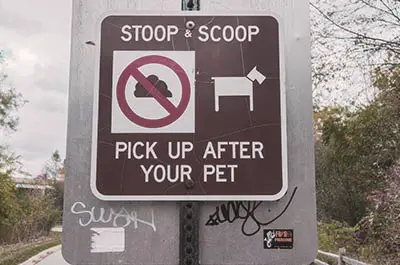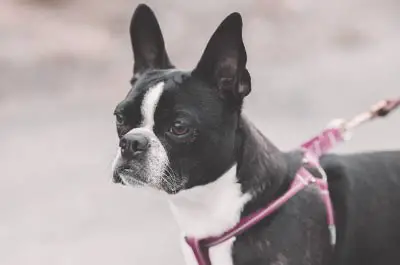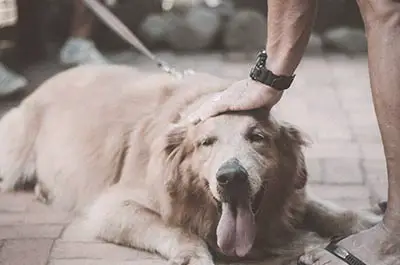Dogs need exercise, and what better way to give them a good workout than by taking them for a walk?
Not only will you get some fresh air and exercise yourself, but you’ll also be providing your dog with an important opportunity to stretch his legs, explore his surroundings, and socialize with other dogs.
Here are some essential tips for a successful walk with your dog.
Get the right equipment.

This is especially important if you have a large dog. You need to protect yourself against aggressive or even just boisterous behavior, and you also want to keep your dog under control in case he tries to dart out into traffic.
Collars come with different kinds of attachments for keeping your dog secure; usually, it’s best to opt for a collar and leash made of nylon or other sturdy material that will stand up to wear and tear.
You may also want to invest in a leash made of a chain or rope rather than a fabric lead; these are much more difficult for your dog to chew through.
A choke collar can be an important part of controlling larger dogs but is a last resort; dogs can easily choke themselves with these collars if they get too excited or pull too hard on the leash. You may also want a spare collar and leash if one of these items is lost.
Now that you have the right equipment, it’s time to get ready for a walk!
Get your dog ready to go.
Dogs, like people, get excited and distracted when you’re about to head out somewhere new or exciting.
Start the process of getting your dog ready to go on a walk by speaking calmly and firmly. Once you’re sure that your dog is listening, continue in the same tone by getting them excited about going on a walk.
If your dog is really excited, you can try doing some tricks such as hand clapping and high fives before you start walking.
Pick a destination and stick to it.
Make sure that you pick a destination for your dog’s walk, and stick with it! This could be a park, some open grassland, or even your own front lawn – find somewhere that you know your dog will want to explore.
It can be very tempting to let your dog roam around the neighborhood; after all, that’s what they do in the wild. But you’re limiting yourself to a tiny area of the neighborhood; if you happen to reach your destination, there may not be anywhere safe or interesting for your dog to explore.
You want to make sure that you know where you’re going before you start walking. If it’s your dog’s first time out, or if you’re uncomfortable letting him run off-leash, make it part of the walk.
If you’re not sure where you’re going, ask someone at the local pet store or animal shelter for a suggestion.
You can also google ‘dog parks’ in your area to find some great walking destinations.
Pick up their poop and dispose of it properly.

If you’re walking your dog in public, you need to make sure that you pick up their poop and dispose of it properly.
There are various tools available to help you pick up your dog’s poop. A simple disposable bag can do the trick, especially if you’re walking a toy or small breed dog and don’t need anything too heavy-duty.
If you’re walking a larger dog, you might want to pay the extra money to buy a ‘doggie bag’ dispenser. These are great because they’re attached to your leash, allowing you to pick up your dog’s poop without ever having to break stride!
Once you’re done, and your dog has finished their business, you can either carry the plastic bag with you until you find a garbage can or dispose of it properly if there’s a trash can next to where your dog peed.
Give your dog a chance to explore.
Don’t immediately try to take your dog through the entire walk in one go. They need time to explore their surroundings, sniff around, and take care of business.
If you’re trying to reach your destination, but it’s taking longer than expected, try to find a place for your dog to do his business and give him some water. This may be enough to slow the walk down and make it easier for your dog to explore without getting overwhelmed.
After you’ve reached your destination, let your dog play a little longer before heading back home.
Be aware of other people who may not want to be around pets.
Many people aren’t comfortable around dogs, and by law, your dog needs to be on a leash when you’re in public.
Other people may not be able to touch your dogs, such as people who are afraid of dogs or those with allergies.
Not everyone loves dogs, and not all dogs love every person they meet.
If you’re not sure whether the person you’re walking next to is comfortable being around dogs, try asking them. If they say no, put your dog on a leash and be especially careful to keep your dog away.
If you see someone who’s uncomfortable around dogs, try to distract your dog with a treat or toy.

When you’re walking around with your dog, be polite to those around you. Don’t let your dog touch anyone’s feet without permission. It’s essential to keep your dog away from anyone at the park.
If you’re going for a walk in a public area, it’s important to make other people aware of your dog before he starts exploring.
Don’t be afraid to ask people if they mind if you let your dog say ‘hi’ to them. If they’re not interested, politely say “No problem!” and walk away.
Some people are afraid of dogs, even small breeds – which is why it’s essential to ask before setting your dog loose.
Experiment and see what works for you and your dog.
You will quickly learn what kinds of walks work best for your dog; some dogs may be able to handle a brisk walk around the neighborhood, while other dogs will only settle down for walks that take them through a park or forest.
It’s best to experiment with different kinds of walks until you find something that works for your dog; this will make it easier to work with your dog’s unique temperament, making your walks more fun for everyone.
Make the walk a positive experience.
The most crucial part of getting ready for a walk with your dog is to make sure that it’s a positive and enjoyable experience.
If you notice that your dog seems frightened or uncomfortable in any way, it’s time to head home.
You might think that your dog is just being stubborn or lazy, but in most cases, they will be trying to tell you that they do not like the current situation.
Keep an ear out for any whining or barking. If your dog is barking, they try to tell you that something is wrong. Try to figure out the problem and then address it as soon as possible.
If you can’t figure out what’s going on, then it may be a sign that your dog is stressed or overwhelmed. In this case, the best thing to do would be to head home and try again later, perhaps after your dog has had a chance to calm down.
Make sure you have the right pace.
Your dog needs to get a certain amount of exercise each day to keep him in good shape. But if you’re trying to tire your dog out, you mustn’t go too fast.
Your dog’s breed will determine how fast you can walk. For example, a Greyhound needs to be kept at a very slow pace to avoid too much trouble keeping up.
It’s best to start walking your dog at a slow, steady pace and work things up from there. If you try to walk too quickly and your dog is panting and struggling to keep up, it might be a sign that you’re going too fast.
Instead, try to use your dog’s breed as a guide to how fast you should be walking. For instance, if you have a smaller dog like a Pomeranian, try to walk them at a similar speed that you might use while taking a stroll around the block.
Your dog’s breed will also affect the length of the walk. Smaller dogs like Yorkies or Pomeranians don’t need too long of a walk to get their energy out. Still, larger dogs like Golden Retrievers or Labrador Retrievers need to be walked for at least 15-20 minutes to feel completely satisfied.
As a rule of thumb, a 30-minute walk around the block should be enough to get your dog’s energy out – but always keep an eye out for signs that your dog needs to play more or is feeling bored. If you’re unsure, err on the side of caution and cut the walk short.
Give your dog breaks.

Just because you’re heading out for a walk doesn’t mean that your dog needs to go nonstop. It’s essential to give your dog breaks throughout the walk so that he can sniff around, mark his territory, and get a few minutes to rest.
If your dog starts to show signs of being tired, then it’s time for a break. Luckily, most dogs are very conscious about getting tired and will tell you when they need a break, either by sitting down or pausing to sniff something interesting.
If you notice your dog doing this, then it’s time to take a break. Sit down with your dog and spend some time petting him until he’s ready to go again.
Conclusion.
Remember, just like your dog’s breed and temperament will ultimately determine how long and far you can walk them; different walks will require different paces.
Make sure to take your dog’s breed, temperament, and energy level into consideration when you’re getting ready to head out the door for a walk. Remember that if your dog is showing signs of being tired or seems nervous in any way, it’s not a good idea to force them to keep up with you. Don’t forget to give your dog breaks throughout the walk so that they can get their energy out and relax for a little bit.
If you follow this advice, you should have no problem making sure that your next walk is a pleasurable experience for you and your pup. Once your dog gets used to walking with you, it’s time to train him to walk on a leash.
If you have any questions or need further instructions, just comment below!

Discover the dynamic world through the eyes of Joanna Perez: a celebrated Cognitive Behavioral Therapy Practitioner and an ardent blogger. Not just a writer, Joanna is also an explorer, partner, and a proud mother. Her expertise goes beyond penning thoughts on parenting, health, and lifestyle; she’s also a certified Women Empowerment Life Coach. With training in Life Mastery, Health, Happiness, and Success, she’s equipped to guide you through life’s complexities. Her dedication to education shines as she’s dived deep into the realms of Neuroscience for Parents and completed the Skilled Helper Training Course.
Reviewed By: Anna West and Brenda Tillman
Edited By: Lenny Terra
Fact Checked By: Marcella Raskin
Photos Taken or Curated By: Matthew Mansour